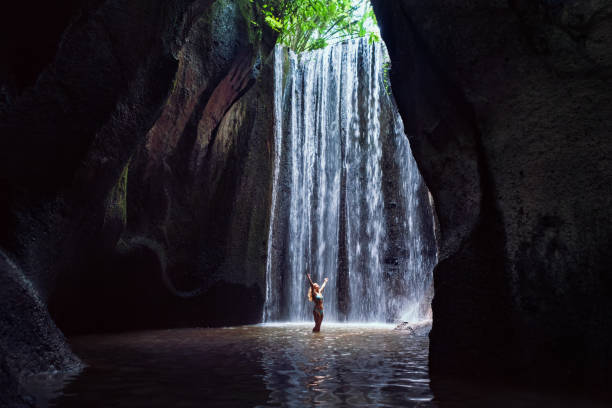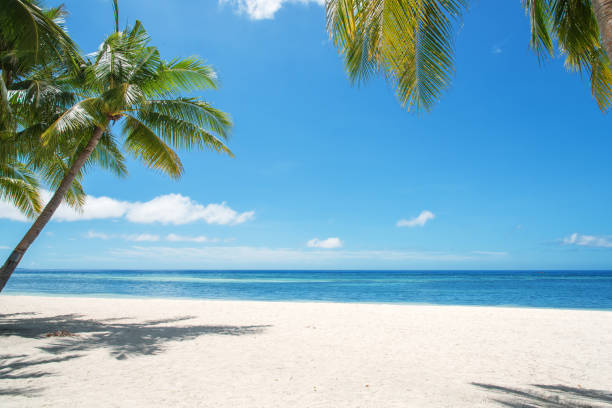Waterfalls have an incredible way of capturing our imagination—whether it’s their thunderous roar, the mist that rises from the base, or the sense of wonder they evoke as we witness the power of nature. While some waterfalls, like Niagara Falls or Iguazu, are famous worldwide, there are many lesser-known cascades hidden in remote jungles, secluded valleys, and untouched corners of national parks that are equally awe-inspiring. These hidden gems offer a more peaceful, intimate experience—far away from the crowds. If you’re an adventurous traveler looking to discover nature’s best-kept secrets, here’s a guide to some of the world’s most stunning, off-the-beaten-path waterfalls worth seeking out.
1. Havasu Falls – Grand Canyon, Arizona, USA
Why It’s Special:
Located in the remote Havasupai Indian Reservation, Havasu Falls is a breathtaking waterfall that plunges over vibrant red rocks into turquoise blue pools. The water’s striking color comes from the high mineral content in the limestone, creating an ethereal scene that’s hard to beat. What makes this waterfall even more special is the difficult trek it takes to get there—requiring a hike down to the canyon floor, where the falls are nestled among the rugged desert landscape.
Getting There:
- Hiking: The 10-mile trek from Hualapai Hilltop to Havasu Falls is an exhilarating adventure, often requiring at least one overnight camping stay. Many visitors also opt to ride mules to the falls.
- Permit: Access to the falls is restricted, and permits are required for both camping and hiking. These permits can be hard to get, as they sell out quickly, so be sure to plan ahead.
Why It’s Worth the Trek:
The hike to Havasu Falls is one of the most rewarding in the United States. Once you arrive, the sight of the falls, the crystal-clear pools, and the peaceful environment make it all worth it. The area has several other waterfalls to explore, including Mooney Falls and Beaver Falls, which only add to the sense of adventure.
2. Tad Fane Waterfall – Bolaven Plateau, Laos
Why It’s Special:
Tad Fane, located in the lush Bolaven Plateau of Laos, is a stunning twin waterfall that drops a dramatic 120 meters (393 feet) into a dense jungle gorge. The falls are particularly impressive during the rainy season when they’re at their most powerful, creating a misty, thunderous roar that echoes through the surrounding rainforest.
Getting There:
- Access: To reach the falls, you’ll need to drive or take a bus from Pakse, then take a short trek through the jungle to the viewing platform. The falls are part of a small eco-lodge where you can stay overnight.
- Best Time to Visit: The rainy season (from May to September) brings out the full force of the waterfall, but the dry season offers a more tranquil, accessible experience.
Why It’s Worth the Trek:
The remoteness and natural beauty of Tad Fane make it one of the most magical waterfalls in Southeast Asia. The surrounding Bolaven Plateau is known for its coffee plantations, so you can enjoy a scenic hike through a region that combines natural beauty with local culture.
3. Rivenna Falls – Kootenay National Park, British Columbia, Canada
Why It’s Special:
Nestled in the heart of Kootenay National Park in Canada’s Rocky Mountains, Rivenna Falls is a hidden gem known for its striking beauty and tranquil surroundings. The waterfall is tucked away along the Rivenna Creek, offering a peaceful and secluded atmosphere far from the typical tourist trail. The falls cascade down a series of rocky ledges into a pool below, surrounded by dense forest and towering cliffs.
Getting There:
- Hiking: A moderate 4-kilometer (2.5 miles) hike through the park’s wild terrain will lead you to the falls. It’s a relatively easy trail, but be prepared for some scrambling along the creek.
- Access: The trailhead is located off Highway 93/95, but signage is subtle, so you’ll need to pay close attention to the park’s information.
Why It’s Worth the Trek:
Rivenna Falls is perfect for those who want to escape the crowds and enjoy a peaceful moment in nature. The waterfall is not well-known, making it a hidden treasure for those willing to venture into the wilderness. The surrounding forest offers opportunities for wildlife sightings and photography.
4. Sekumpul Waterfall – Bali, Indonesia
Why It’s Special:
Sekumpul is one of Bali’s most stunning and least visited waterfalls. Hidden deep within a lush jungle valley, the waterfall is a collection of several streams that plunge down over lush cliffs into a large, clear pool below. Unlike many of Bali’s more famous waterfalls, Sekumpul feels untouched by tourism and offers a serene, almost magical atmosphere.
Getting There:
- Hiking: Getting to Sekumpul involves a moderately strenuous trek, crossing rivers, navigating steep paths, and walking through thick jungle. The trailhead is in the village of Sekumpul, which is located about 80 minutes’ drive from Ubud.
- Tour Option: You can hire a local guide, which is highly recommended as the trail can be tricky to navigate without local knowledge.
Why It’s Worth the Trek:
Sekumpul’s raw beauty is awe-inspiring, with its many cascading waterfalls framed by dense jungle. This is a perfect spot for those who love adventure, nature, and off-the-beaten-path travel. The surrounding area is also home to traditional Balinese villages, adding cultural interest to the journey.
5. Sutherland Falls – Fiordland National Park, New Zealand
Why It’s Special:
Sutherland Falls is New Zealand’s tallest waterfall, plunging 580 meters (1,900 feet) down into a lush green valley in Fiordland National Park. The waterfall’s grandeur is breathtaking, and it’s often seen as a highlight of the famous Milford Track. However, despite its size and beauty, it is often overlooked by visitors focused on the more famous Milford Sound, making it a lesser-known treasure.
Getting There:
- Hiking: The Sutherland Falls can be reached by a 5-hour hike from the Milford Track, one of New Zealand’s most scenic and challenging treks. The falls are also accessible as part of a helicopter tour.
- Best Time to Visit: Spring to autumn is the best time to visit, as the falls are at their most powerful after the winter snow melts.
Why It’s Worth the Trek:
The hike to Sutherland Falls offers spectacular views of Fiordland’s remote wilderness, including alpine lakes, moss-covered forests, and mountain peaks. The falls themselves are stunning, and you’ll often have the place to yourself, providing a quiet, awe-inspiring moment in the midst of nature’s beauty.
6. Ban Gioc Waterfall – Cao Bang, Vietnam
Why It’s Special:
Ban Gioc is one of Asia’s most beautiful and least-visited waterfalls, located on the border between Vietnam and China. This wide, multi-tiered waterfall flows down into a serene turquoise river, surrounded by lush greenery and karst mountains. The waterfall is particularly impressive when viewed from the Vietnamese side, where you can get a great close-up view of the falls and surrounding area.
Getting There:
- Access: Ban Gioc is located in the remote Cao Bang province, around 270 kilometers (170 miles) from Hanoi. It can be accessed by bus, car, or motorbike, and once you reach the area, you can hire a boat to get up close to the falls.
- Best Time to Visit: The falls are best seen in the rainy season (May to October), when the water flow is at its peak, though it’s beautiful year-round.
Why It’s Worth the Trek:
Ban Gioc is a true hidden gem, offering an untouched, wild landscape. The journey to the falls passes through rural Vietnam, giving you a chance to explore the countryside and experience local life in a way that’s increasingly rare in the age of mass tourism.
7. Waimoku Falls – Kipahulu, Maui, Hawaii
Why It’s Special:
Located in the Kipahulu District of Haleakalā National Park on Maui, Waimoku Falls is a stunning 400-foot (122-meter) waterfall that plunges over a cliff into a pool below. It’s a popular but still somewhat hidden spot, accessed by the Pipiwai Trail, which winds through bamboo forests and lush vegetation. The hike to Waimoku Falls is scenic and a perfect way to explore Maui’s natural beauty.
Getting There:
- Hiking: The Pipiwai Trail is a 4-mile (6.4 km) round-trip hike that leads you through a bamboo forest and past smaller waterfalls before reaching the impressive Waimoku Falls. The trail can be muddy, so be prepared for slippery conditions.
- Best Time to Visit: Rainy season brings out the falls’ full splendor, though any time of year offers a stunning experience.
Why It’s Worth the Trek:
The combination of diverse ecosystems along the hike, including bamboo groves and tropical rainforest, makes the journey to Waimoku Falls an adventure in itself. The waterfall is a true hidden treasure on Maui, providing a quieter, more peaceful alternative to the island’s more crowded attractions.
Nature’s Hidden Wonders Await
Exploring hidden waterfalls around the world offers more than just the beauty of cascading water—it’s about discovering places that few others have seen, stepping off the beaten path, and immersing yourself in some of nature’s most awe-inspiring and untouched landscapes. Whether you’re hiking through jungles, trekking across mountains, or navigating rugged national parks, these hidden waterfalls promise adventure, serenity, and unforgettable memories. So pack your bags, lace up your boots, and get ready to chase the world’s best-kept natural secrets!






